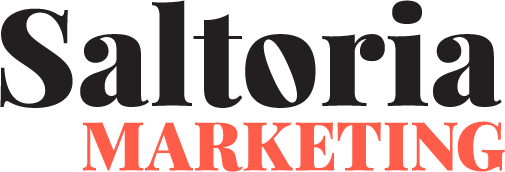The world of marketing isn’t always plain-English and it’s easy to be overwhelmed by acronyms, technical terms and fancy seemingly meaningless words!
In this video, Sally helps explain some popular marketing mysteries with a quick no-nonsense guide to the top 21 most popular marketing terms. Are you ready?
CTA or Call-to-Action.
Let’s start with one of our favourite ones! Your ‘Call-to-action’ is your prompt to get your customers to take action.
You might want them to sign up, register today, book now, find out more or read on etc etc. Essentially, a call-to-action is a distinct and direct phrase in your marketing copy or a designated button on your website. Marketers use CTA’s to prompt the customer for an immediate response or encourage an immediate sale.
It’s important to create compelling and enticing call-to-actions to encourage and inspire your customers. We often use FOMO (Fear of missing out) type phrases in our CTA’s to encourage urgency.
Your tone of voice.
Your tone of voice is your verbal brand, your brand personality and essentially ‘how you speak’ to your customers.
A company’s tone of voice guidelines describes how the brand communicates with their customers. This is very important as it influences how those customers perceive your brand.
Most importantly, your tone of voice represents your brand personality and values. It’s HOW you say something rather than WHAT you are saying.
For example, Saltoria’s brand personality is smart, straightforward and fun. We would never say ‘we are smart’ even though we are smart with the advice we give.
Content Marketing.
We’re sure you’re all very familiar with this term, but sometimes it’s hard to summarise the meaning concisely.
Content Marketing is simply a type of marketing that involves the creation and sharing of online content. Think of videos, podcasts, blogs, Social Media posts, quizzes for example. The aim here is to inspire, entertain or educate whilst driving traffic to your website, of course!
This, therefore, encourages customers to learn more about your brand and your product or services.
Content Marketing is an effective way of attracting, engaging and retaining an audience. This is mainly done by creating and sharing relevant and useful content that will enhance the customer’s life in some way.
This approach establishes expertise, promotes brand awareness and keeps your business top of mind when it’s time to buy what you sell.
Your USP.
We all have USPs as individuals and our brands do too!
Your unique selling point is what makes you unique, original and different to our competitors. Even if your product or service isn’t unique, your USPs can be showcased in many other ways.
For example through your brand, your customer service and your approach to sustainability. Once you’ve identified what makes you unique, you can weave this message and its benefits into your marketing!
Your SMART objectives.
You may be familiar with this term from personal goal setting. This is important for all marketing plans too!
SMART stands for Specific, Measurable, Attainable, Relevant, and Time-Bound.
By setting objectives that are aligned with these criteria, you will then have an anchor to base all of your focus and decision-making.
SWOT analysis.
Again, another Saltoria favourite! A SWOT Analysis is a simple but useful framework for analysing your company’s strengths, weaknesses, opportunities and threats.
This is a great process and exercise to go through. It helps you build on what you already do well and it helps you constructively address what you’re not so good at. It also helps you assess risk and reflect on the future.
It’s a great and simple framework to realistically plan for success and be ready for oncoming challenges.
Brand Identity.
Your brand is your company personality and what distinguishes you from others. It is not just your logo, it’s everything that makes up your company identity.
It is your name, your logo and your values. It’s also your mission and vision and your tone of voice. Your brand identity should be reflected across all your marketing assets or any other feature that identifies you from others.
Your ‘tagline’.
This may seem like an easy one – but many businesses get this wrong!
A tagline is a ‘one-liner’ or a memorable phrase that sums up the tone and premise of your product or service. It can also reinforce and strengthen the audience’s memory in a relevant way.
Saltoria’s tagline is super simple & straightforward. It’s ‘Your virtual marketing team’. Your tagline doesn’t have to be poetic or gimmicky. It can simply be a short and snappy phrase to summarise your business.
‘Reach’.
This is one of those words that could have many meanings! In marketing terms, marketing reach is the total number of people that have seen your content.
For example, if 1 person sees your advert 5 times it will count as 1 reach (as we’re referring to 1 person only).
So, your campaign reach is a count of the number of UNIQUE people who viewed your digital advertisements within a campaign at least once.
An ‘Impression’.
This is one that definitely feels a bit ‘jargony’ sometimes! It’s simpler than you think though.
An impression is a metric used to quantify the number of times your content has been displayed, irrelevant to if someone clicked on it or not. One person could have multiple impressions for a single piece of content.
So, if your advert reaches 1 person 5 times it will count as 5 impressions!
Often in paid advertising, you ‘pay per impression’. This means you’re paying for the exposure you’re getting (views!) instead of clicks.
CTR or ‘Click-though-rate’.
This is where we start to get a bit technical!
Your CTR or ‘Click-through-rate’ is a ratio that measures the number of clicks per number of impressions.
Essentially, the ratio between the number of times your content is displayed to someone (impressions on an advert for example, or on an email) and the number of times that someone clicks on the Call to Action.
This is measured with a percentage value and of course the higher the better. A high CTR is a good indication that users find your ads helpful and relevant.
CTR are essential to measure the success of an online advertising campaign as well as the effectiveness of email campaigns.
SEO or Search Engine Optimisation.
What is Search engine optimisation? Is the process of improving the quality and quantity of website traffic to your website from search engines.
SEO targets organic traffic that you haven’t paid for. Rather than the traffic you’ve generated by paid adverts or direct traffic (i.e. people typing in your website URL directly).
SEM or Search engine marketing on the other hand is a form of marketing that involves the promotion of websites by increasing their visibility in search engine results pages primarily through paid advertising.
SEO and SEM are both vast areas of expertise. We encourage you to reach out to an expert if you’d like to learn more.
PPC or Pay-per-click.
Pay-per-click is a digital advertising model used to drive traffic (customers!) to your website. In this case, the advertiser pays the publisher each time someone clicks on the ad.
For example, Saltoria may pay Google to have a PPC advert when a customer searches for ‘Digital Marketing Companies’. We only pay when a customer clicks on our advert.
Display advertising.
Display advertising (sometimes called banner advertising) is another form of digital advertising that conveys a marketing message visually. For example, through text, logos, animations, videos, photographs, or other graphics.
Viewers that click on the image are taken to the relevant landing page. Display adverts are different from search ads as they can’t be found in search results! You’ll often see a display advert when exploring a website.
The advert can appear as a static picture or with some sort of animation to better engage the user.
CPC or Cost-per-click.
Cost per click (or CPC) is an online advertising revenue model. Advertisers will pay each time a visitor clicks on a display advert linked to their website.
For example, say that Saltoria put up an advert on Google for when customers search ‘Digital Marketing Companies’. In this case, we’d pay each time someone that has searched for this term has clicked on the advert.
Retargeting.
Have you ever viewed something on an online shop and then thought ‘I’ll go back to that’? Then you’re suddenly being followed around the internet with an advert showing that dress, pair of trainers or gadget?
Well, this is retargeting! Behavioural retargeting is a form of online targeted advertising. In this case, adverts are targeted to customers based on their previous online behaviours.
This only happens if you accept cookies on a website! Retargeting tags online users by including a pixel within the target webpage or email, which sets a cookie in the user’s browser.
Therefore, that’s why you see an advert for the item you’ve previously viewed!
Remarketing.
This can be easily confused with retargeting, but it’s actually a more general term. Remarketing refers to the action of targeting existing customers or leads again.
For example, you can re-market to someone to up-sell and cross-sell your product or service, or retain your existing customers.
You can do remarketing in different ways and through different channels, for example, Social Media, emails, etc.
With eCommerce, for example, remarketing adverts are a successful way to reduce shopping cart abandonment. The advertiser keeps displaying the product the user added to the cart but left the site without purchasing.
Retargeting, on the other hand, refers to the method of serving adverts to people that have visited your website based on Cookies.
Keyword.
In SEO terms, a keyword is a search term entered by a user on Google (or another search engine).
When the user enters the term, a list of results (websites!) that are relevant to that search appear on screen.
A keyword is a single word or a phrase that someone searches for on a search engine. If your website ranks for a popular keyword, then it will likely appear at the top of the results for that search!
Your ‘customer journey’.
A customer doesn’t usually decide to purchase an item immediately after finding out about it for the first time.
Your ‘customer journey’ helps you tell the story of your customers’ experiences with your brand across all touchpoints.
Whether your customers interact with you via social media, email, live chat or other channels, mapping the customer journey helps ensure no customer slips through cracks.
Customer journey maps can help you illustrate the overall experience a customer has with a service, a physical or digital product or even a brand.
A journey map can help you and your team in different ways when it comes to improving and optimising your customer experience.
‘Smarketing’.
This is a new one in our dictionary too! We think it’s quite fun! What do you think?
Created by the great people at ‘HubSpot’…Smarketing is the process of integrating the sales and marketing processes of a business.
The objective is for the sales and marketing functions to have a common integrated approach. This can apparently lead to annual revenue growth of up to 20%, according to a study in 2010.
B2B and B2C.
A B2B, or “business-to-business” company provides services or products to other businesses.
A B2C, or “business-to-consumer,” company sells directly to individual customers. Many businesses can offer both!
I met Vittoria at a lovely student accommodation company nearly 5 years ago. Our B2B business was about building relationships and rental agreements with universities. And our B2C business was about targeting individual students for them to directly book rooms themselves.
There you go! That was a very quick lesson. Please go and get a cup of tea now and have a break!
Are there any terms we’ve missed that you’d like explained? Simply ask in the comments section or fill in this form if you’d like a personalised reply.





0 Comments
Trackbacks/Pingbacks